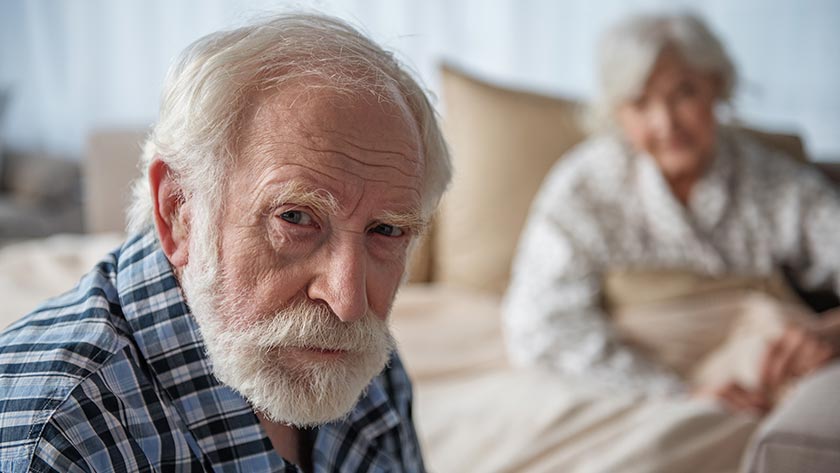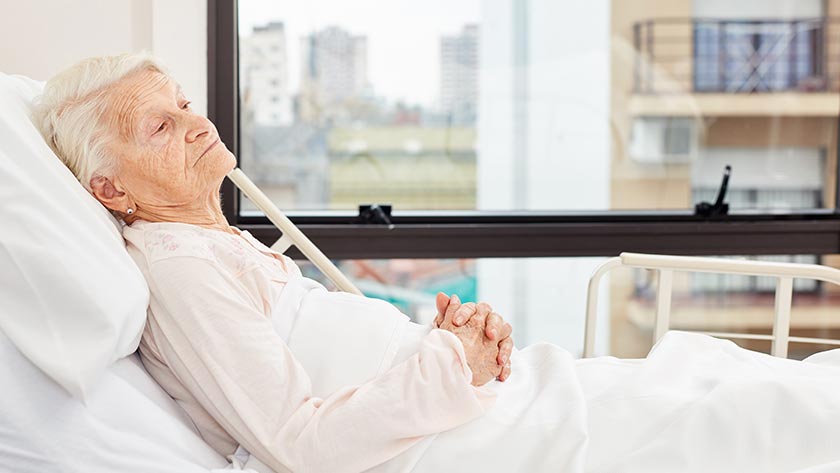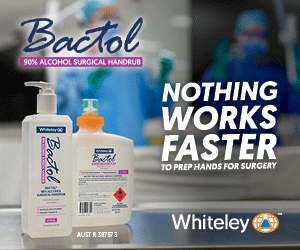It’s been five years since my mother died and it’s only now I find my voice to articulate the experience of her end-of-life care. As a family, we had planned for Mum to die at home – but sadly this didn’t happen.
I am a palliative care nurse with six years’ experience in the field, mainly in the community. Mum was diagnosed with bowel cancer in 2014. After her treatment options came to an end, she expressed a strong desire to stay home, with Dad, to the very end of her life.
My siblings and I provided her with 24-hour care at home for more than nine months, with support from the local hospice, community care agency and general practice (GP) team. We were a well-equipped and capable family/carer tag team and worked together like a well-oiled machine.
Family matriarch
In later months, agency carers visited twice daily and the household 24-hour roster included several private carers.
Mum’s domain as the family matriarch and household manager after 66 years of marriage was not challenged – she held that role dear to her heart and was not relinquishing it.
However, as she became increasingly frail, her ability to make good decisions diminished. Increasing narcotic pain medication affected her ability to function independently and safely and she lost sight of increasing difficulties posed by staying at home without further support and equipment. The family was tiring and Dad’s anxiety was escalating as he watched Mum’s world slowly shrink, his own safety network unravel.
As my siblings and I juggled work and family commitments, the increasingly complex medical and emotional needs of our parents strained our resources and resilience. We needed a break and felt that Mum and Dad’s safety was increasingly at risk without a plan for special equipment and support.
Errors and accidents were marginally avoided. We needed Mum on board with any proposed additions or changes and hoped she might be more open to guidance from health professionals while taking a short break in respite care.
At a family meeting hosted by the hospice team, Mum and Dad agreed to trial a 10-day visit in a respite care home. We would regroup on their return, more equipment in place, our plan refreshed.
We knew Dad could not live alone after Mum was gone, as he had short-term memory loss and anxiety. We thought his spending time at the care facility in Mum’s presence would gently introduce his proposed new living space.
Both Mum and Dad’s health was stable, though complicated, and the respite admission introduction was welcoming and thorough. They had each taken activities to keep them occupied during their stay, including books and puzzles. The paper was delivered every day and Sky TV connected. Both avid sports fans, they had for years enjoyed watching many happy hours together.
Mum was engaged with a personal project – she was corresponding with present-day pupils of her beloved childhood primary school, attended 80 years earlier. She was describing to them her childhood daily school activities, explaining how different life was back then. She treasured the replies and questions from the children and teacher.
Mum and Dad went into rest-home level respite care on September 7, 2016. We set up a schedule so one family member would visit every day, sometimes twice a day, alongside other visitors.
On September 12, Mum and Dad went out for lunch with family to a café. They later did some shopping and Mum was perky, making sure Dad was okay and looking for a birthday present for my sister. She walked further than Dad did, along the main shopping street. This was not unusual.
That same day, after they had returned from the outing, I had a phone call to say Mum had had a fall. I was advised she was doing well, no changes or injuries were noted and she did not need a medical review. I was reassured there was no need for me to visit.
The next morning, the 13th, Mum had another fall. I was advised by phone, and again told she did not sustain injury. Mum had been found on the floor in Dad’s arms – her legs had given away and Dad had supported her to the ground. The nurses believed Mum may have had some kind of event – they said her pupils were not reacting to light and she was not speaking coherently. This was alarming.
Mum was receiving bed cares from inexperienced staff. She was in significant pain and distress as they rolled her from side to side with minimal explanation or empathy.
Worried, I drove to the facility, 40 minutes from home. When I arrived, Mum was receiving bed cares from inexperienced staff. She was in significant pain and distress as they rolled her from side to side with minimal explanation or empathy.
Through the closed door I heard Mum cry out in pain, frustration and fear of falling, sounds which still haunt me. I was shocked, and requested a nurse and pain relief before they continued further. I had never seen Mum so distressed, begging to “make it stop, I can’t do this anymore!”
The carers seemed unfamiliar with the needs of someone so unwell and seemed either indifferent or unaware of a gentle approach. They seemed out of their depth and had not asked for help.
As they shared a double room, Dad had been present during this event. He sat in the corner, a helpless witness, powerless to intervene.
Mum had had a series of urinary tract infections (UTIs) before the respite admission. Symptoms would appear rapidly – each time in a different combination. (These had included dropping things, unable to hold a cup, stumbling, falling, fading cognitive skills, difficulty communicating, hallucination, smelly urine, frequency with passing urine with scant amounts passed. She required a lot more assistance and would sleep longer in the daytime.)
We learned to recognise the symptoms, and with the GP’s support, commenced antibiotics and pain relief quickly. She would bounce back, the symptoms quickly resolved. She was otherwise slowly deteriorating.
My parents’ generation is not one to challenge or question anyone medical. Dad’s state of mind had eroded his confidence over recent years and he was immobilised by fear.

On the day of her second fall, my sister and I observed familiar UTI symptoms in Mum becoming increasingly evident, without treatment. Within hours we watched her suffering increasing hallucinations, delirium and confusion. This was distressing to observe, and worse, her symptoms were not acknowledged as an issue by the nursing staff. We pointed out this usually indicated a UTI – based on our previous experiences. Nothing was done.
Later that afternoon, a large bruise appeared on Mum’s left forehead, likely from one of her falls. She was rapidly deteriorating before our eyes, no longer able to walk or talk, and needing full bed care. The two nurses in charge were adamant it was not a UTI, but “an event, like a stroke”.
Over the following days, the infection progressed rapidly without therapeutic medication. The nursing staff refused to even consider the possibility of a UTI because the urine was difficult to test and wasn’t totally indicative of UTI.
Our experience nursing and caring for our mother over previous months/years was dismissed as irrelevant. We were told to “stop being obsessed by UTI. You are stuck on that idea and unable to see past it.”
I see now the nursing staff perceived we were not acknowledging our mother was dying. Yes, we knew she had a terminal disease, but this event was not being managed well, and could have been treated.
Despite considering myself an experienced and vocal advocate, I was immobilised, not heard and dismissed in one fell swoop. I felt I had let my mother down in a most significant way.
Wearing ‘daughter’ hat
I had been advised to wear my “daughter” hat and try not to look from a palliative care nurse perspective. I found this increasingly difficult as I watched Mum’s symptoms become more complex and her needs not met. I started asking more questions and not getting satisfactory answers, disturbed by the inaccessibility of medical care.
The facility doctor did his rounds the day after Mum’s second fall. When I asked, I was told by the nurse, “He popped his head in the door, glanced in and said – there was nothing needing to be done from my perspective.” And that was the end of that.
I still do not know if he was advised at that time of Mum’s reason for admission (respite), the significant changes, her UTI symptoms or her falls during her admission. I was later told he believed Mum’s GP and the hospice were managing her medical needs.
The GP would not visit her as the facility was too far away from his practice, and he believed her medical care was being managed by the facility doctor and the hospice team.
The hospice believed Mum’s care was being managed by the facility doctor and her GP.
The hospice was unaware of Mum’s change in condition until I rang them the day after her second fall and described her symptoms, her increasing rapid and unexpected deterioration. I reminded them she had been admitted for respite, not end-of-life care, that she had been relatively well on her admission.
Each of the three medical service doctors believed the other was taking care of Mum, when in fact, none of them were. She had slipped through the cracks.
We had very much hoped to provide end-of-life care at home for Mum, as had been her wish. This was looking less likely as she rapidly deteriorated.
That same afternoon, the hospice nurse and doctor visited and assessed Mum. They identified a significant deterioration, she had a bowel blockage and was not for further treatment. She was approaching end of life. The nurse asked if I would like to discuss this with Mum, which I declined. It was not my role, and Mum had always wanted professional medical opinion, before seeking mine.
Mum cried when she was told by the nurse that her end of life was rapidly approaching. She was sobbing to Dad, saying repeatedly, “It’s too late…, it’s too late.” I believe she was referring to it being too late to get him familiar with his future new home before she would be gone. That was what upset her the most – to be leaving him alone, without her help.
After the hospice assessment, it was decided Mum needed nil by mouth, a syringe driver for pain relief, plus intensive nursing care.
For days following this, Mum continued to express her desire to eat and drink. This was so hard for us all, as she would reach for food and beg to be fed. We gave her tastes of liquid as allowed but it was never satisfying enough for her appetite.
Both Mum and Dad were thankfully moved from rest home level to hospital level care – and were very lucky to have adjoining rooms, a very suitable arrangement for the large family presence. Two or more of us, sometimes 10 or more, stayed with them 24 hours a day from that point forward – they were never alone.
Sadly, Mum’s project work and correspondence with her childhood primary school went missing during the transition to hospital care. It was never found and we believe it was inadvertently trashed, along with newspapers and other paraphernalia.
After their first night apart, in separate rooms, Mum become very distressed after waking to find Dad wasn’t there. Dad was immediately brought into her room, and at the sight of him, she instantly calmed. During the day, Dad sat closely beside her, rubbing her hands and softly whistling or reading his paper.
We quickly became aware that Mum was unlikely to go home again. While the staff were welcoming of our presence, over time it became clear they were unaccustomed to large family numbers and were not entirely comfortable with it. Despite this, they accommodated us in various ways and we were grateful.
At no point were we given the option of returning Mum home – it wasn’t discussed. I knew it was possible with some coordination, but everything seemed to happen so quickly and was whisked out of our hands. We were in shock and numb, no longer making the decisions.
Mum’s personal cares were managed very well from that point on. However I was disappointed on a number of points.
Firstly, there was no acknowledgement of our experience of caring and nursing Mum at home over previous months/years.
Secondly, I was never hesitant to request pain relief for Mum, but the length of time she had to wait for it was cruel and her suffering unnecessary. It took 20-30 minutes to be administered, as it took time to find two hard-working and busy registered nurses to check the medications together. I know it would have been more promptly managed had she been at home.
When I asked for pain relief for Mum, there was no palliative assessment done. My word that she needed medication was enough, and she was given it. I felt an enormous responsibility to get it right and worried what might happen if I weren’t there.
I had advocated for Mum, but at no point had I felt I was unreasonable in what or how I asked for what she needed. Despite this, my requests were sometimes met with sighs and comments suggesting I was being demanding.
The time came to start a more suitable pain medication delivery, in the form of a syringe driver. However it took 20 hours, from the time the syringe driver was first commenced, for staff to discover it was not delivering the medication.
This clearly indicated the staff did not have the required understanding of how a syringe driver worked – what the monitoring and recording meant and how to ensure medication was being delivered correctly.
Breakthrough pain
Mum suffered dreadful breakthrough pain for those 20 hours. I had deliberately kept my daughter hat on and not checked the driver myself, though I was tempted several times. I now regret not doing so.
I have little respect for the nurse who, after I asked her for pain relief for Mum, flicked her hand in the air in a dismissive farewell, saying, “You’ll have to get someone else love, I’m going home. Go and look in the other wings.” She never even turned around – her back to me throughout as she left the building. Mum died that night, hours after this nurse flicked my request off.
Mum died in the presence of family, just 18 days after her admission for a 10-day respite visit. She put up a strong battle but finally gave up.
Providing individuals and their families professional and empathetic support in end-of-life care is significant – equally so is experience and confidence.
While the considered and thoughtful nursing care was appreciated, it was not specialised palliative care. Aged care facilities must have specialised palliative care to ensure the best outcomes for everyone’s end-of-life experience.
While it wasn’t the planned end-of-life place for Mum, we did the best we could. Rest in peace, Mum.
What I recommended
I made the following recommendations to the hospice and the facility hospital:
- Ensure palliative care education is provided for all medical staff – particularly in pain management, assessment and communication.
- Ensure staffing levels are adequate for provision of timely intervention, communication and nursing cares.
- Be mindful and careful when handling anyone’s personal property.
- Ensure ongoing hospice support be provided for staff, patients and families before, during and after palliative care training is delivered.





